-
 Bitcoin
Bitcoin $116400
-0.36% -
 Ethereum
Ethereum $4033
3.40% -
 XRP
XRP $3.302
-1.26% -
 Tether USDt
Tether USDt $1.000
-0.02% -
 BNB
BNB $796.1
1.67% -
 Solana
Solana $177.8
1.89% -
 USDC
USDC $0.9999
0.00% -
 Dogecoin
Dogecoin $0.2314
4.09% -
 TRON
TRON $0.3381
0.14% -
 Cardano
Cardano $0.7989
1.22% -
 Stellar
Stellar $0.4496
-1.84% -
 Chainlink
Chainlink $20.42
9.42% -
 Hyperliquid
Hyperliquid $41.17
0.88% -
 Sui
Sui $3.914
3.77% -
 Bitcoin Cash
Bitcoin Cash $584.7
1.52% -
 Hedera
Hedera $0.2632
-0.54% -
 Avalanche
Avalanche $24.09
3.40% -
 Ethena USDe
Ethena USDe $1.001
-0.02% -
 Litecoin
Litecoin $123.2
1.33% -
 Toncoin
Toncoin $3.318
-0.04% -
 UNUS SED LEO
UNUS SED LEO $8.984
-0.05% -
 Shiba Inu
Shiba Inu $0.00001323
2.85% -
 Uniswap
Uniswap $10.90
4.41% -
 Polkadot
Polkadot $3.999
3.34% -
 Dai
Dai $1.000
0.01% -
 Cronos
Cronos $0.1630
9.64% -
 Bitget Token
Bitget Token $4.484
0.82% -
 Monero
Monero $272.4
2.44% -
 Pepe
Pepe $0.00001173
6.03% -
 Aave
Aave $290.8
2.88%
How to interpret the low-level golden cross of the KDJ of the small positive line at the bottom? Rebound in the oversold area?
The low-level golden cross on the KDJ indicator, with a small positive J line at the bottom, signals a potential rebound in an oversold crypto market, prompting traders to consider entering long positions.
Jun 03, 2025 at 06:07 am
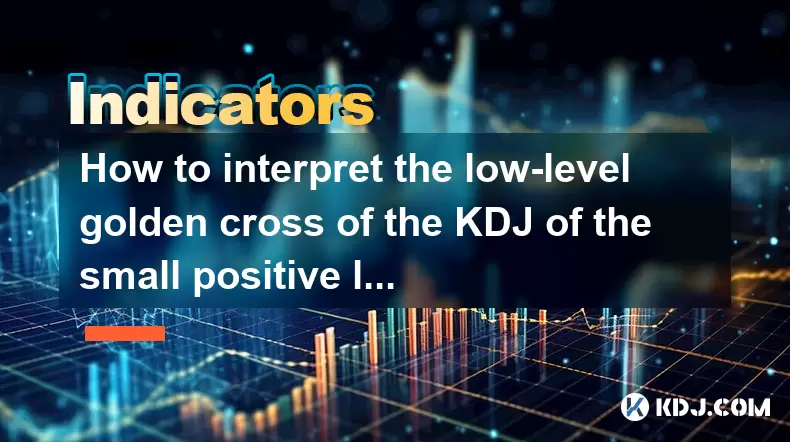
The low-level golden cross of the KDJ indicator, especially when it occurs with a small positive line at the bottom, is a significant signal for traders in the cryptocurrency market. This phenomenon is often interpreted as a potential signal for a rebound in an oversold area. In this article, we will delve into the details of this signal, how to interpret it, and what actions traders might consider taking.
Understanding the KDJ Indicator
The KDJ indicator, also known as the Stochastic Oscillator, is a momentum indicator used in technical analysis to determine overbought and oversold conditions in the market. It consists of three lines: K, D, and J. The K line represents the fastest-moving line, the D line is a moving average of the K line, and the J line is a further derivation used to confirm signals.
The KDJ indicator is particularly useful in cryptocurrency trading because it helps traders identify potential reversal points in the market. When the K line crosses above the D line, it forms a golden cross, which is generally considered a bullish signal. Conversely, a death cross occurs when the K line crosses below the D line, indicating a bearish signal.
The Low-Level Golden Cross
A low-level golden cross occurs when the K line crosses above the D line at a low level on the KDJ chart. This typically happens when the market is in an oversold condition, meaning the price of the cryptocurrency has fallen significantly and might be due for a rebound.
The low-level golden cross is particularly noteworthy because it suggests that the downward momentum is weakening and that buyers might be stepping in. This signal is considered more reliable when it occurs at or near the bottom of the KDJ chart, indicating that the market has reached a point of extreme oversold conditions.
The Small Positive Line at the Bottom
When a small positive line appears at the bottom of the KDJ chart, it adds another layer of confirmation to the low-level golden cross. The small positive line refers to the J line, which is typically the most sensitive and fastest-moving line of the three. When the J line is positive and at the bottom of the chart, it suggests that the market is at a point of extreme oversold conditions and that a reversal might be imminent.
Interpreting the Signal
Interpreting the low-level golden cross with a small positive line at the bottom involves understanding the context of the market and the overall trend. Here are some steps to consider when interpreting this signal:
- Check the overall trend: Before acting on the signal, it's crucial to assess the overall trend of the cryptocurrency. If the trend is bearish, the low-level golden cross might be a temporary rebound rather than a sustained reversal.
- Confirm with other indicators: It's wise to confirm the signal with other technical indicators, such as the Relative Strength Index (RSI) or the Moving Average Convergence Divergence (MACD). If these indicators also suggest an oversold condition, the signal becomes more reliable.
- Volume analysis: High trading volume accompanying the low-level golden cross can further confirm the signal, indicating strong buying interest at the bottom.
- Price action: Look for signs of price stabilization or a bullish candlestick pattern, such as a hammer or a doji, which can further support the signal.
Rebound in the Oversold Area
A rebound in the oversold area is a common occurrence in the cryptocurrency market, and the low-level golden cross with a small positive line at the bottom can be a precursor to such a rebound. A rebound typically means that the price of the cryptocurrency will move upward from its current low levels, potentially offering traders an opportunity to enter a long position.
However, it's important to manage expectations and risk. A rebound does not guarantee a sustained upward trend, and the market could quickly return to its bearish state. Therefore, traders should set appropriate stop-loss orders and be prepared to exit the trade if the market does not move as anticipated.
Trading Strategies Based on the Signal
When the low-level golden cross with a small positive line at the bottom occurs, traders might consider the following strategies:
- Enter a long position: If the signal is confirmed by other indicators and the overall market context supports a potential rebound, traders might enter a long position to capitalize on the upward movement.
- Set a stop-loss: To manage risk, traders should set a stop-loss order below the recent low to limit potential losses if the market continues to fall.
- Take profits: As the price rebounds, traders should consider taking profits at predetermined levels to lock in gains. This could be based on resistance levels or a certain percentage gain.
Practical Example
To illustrate how to interpret and act on the low-level golden cross with a small positive line at the bottom, let's consider a hypothetical example involving Bitcoin (BTC).
- Identify the signal: You notice that the KDJ indicator on the daily chart of BTC shows a low-level golden cross with the K line crossing above the D line at the bottom of the chart. Additionally, the J line is slightly positive, indicating an extreme oversold condition.
- Confirm the signal: You check the RSI, which is also in the oversold territory below 30, and the MACD, which shows a bullish divergence. The trading volume is increasing, suggesting strong buying interest at the bottom.
- Enter the trade: Based on the confirmed signal, you decide to enter a long position on BTC at the current price of $20,000.
- Set a stop-loss: To manage risk, you set a stop-loss order at $19,000, just below the recent low.
- Monitor and adjust: As the price of BTC starts to rebound, you monitor the market closely. When the price reaches $22,000, you decide to take partial profits and move your stop-loss order to $21,000 to lock in some gains and protect against a potential reversal.
Frequently Asked Questions
Q1: Can the low-level golden cross with a small positive line at the bottom occur on different timeframes?
Yes, the low-level golden cross with a small positive line at the bottom can occur on various timeframes, including daily, hourly, and even minute charts. However, the reliability of the signal can vary depending on the timeframe. Signals on longer timeframes, such as daily charts, are generally considered more reliable than those on shorter timeframes.
Q2: Is the low-level golden cross with a small positive line at the bottom always a reliable signal for a rebound?
No, while the low-level golden cross with a small positive line at the bottom is a strong signal, it is not always reliable. Market conditions, overall trends, and other factors can influence the effectiveness of the signal. Traders should always use additional confirmation and risk management strategies.
Q3: How can I improve the accuracy of the low-level golden cross signal?
To improve the accuracy of the low-level golden cross signal, consider the following:
- Use multiple timeframes to confirm the signal.
- Combine the KDJ indicator with other technical indicators, such as RSI and MACD.
- Analyze the overall market trend and sentiment.
- Monitor trading volume to confirm buying interest at the bottom.
Q4: What are the risks associated with trading based on the low-level golden cross signal?
Trading based on the low-level golden cross signal carries several risks, including:
- False signals: The market might not rebound as expected, leading to potential losses.
- Market volatility: Cryptocurrency markets can be highly volatile, and prices can move quickly against your position.
- Over-reliance on a single indicator: Relying solely on the KDJ indicator without considering other factors can lead to poor trading decisions. Always use a comprehensive approach to technical analysis.
Disclaimer:info@kdj.com
The information provided is not trading advice. kdj.com does not assume any responsibility for any investments made based on the information provided in this article. Cryptocurrencies are highly volatile and it is highly recommended that you invest with caution after thorough research!
If you believe that the content used on this website infringes your copyright, please contact us immediately (info@kdj.com) and we will delete it promptly.
- Shiba Inu (SHIB) in the Crypto Landscape: Community, Trends, and Future Outlook
- 2025-08-09 20:30:12
- Lasers in Modern Warfare: Iron Beam and the Future of Defense
- 2025-08-09 20:30:12
- Maxi Doge Presale: The Meme Coin That's Pumping Iron and Prices!
- 2025-08-09 19:10:11
- Rare Coin Warning: Don't Get Fooled by That 1p Coin!
- 2025-08-09 18:50:12
- Cardano, Unilabs, and Tron Price: Decoding the Latest Crypto Buzz
- 2025-08-09 18:30:12
- Aerodrome Finance: Price Targets and the Bullish Channel - What's Next?
- 2025-08-09 18:50:12
Related knowledge

What does it mean when the Triple Moving Average (TRIX) turns downward but the price doesn't fall?
Aug 09,2025 at 12:42pm
Understanding the Triple Moving Average (TRIX) IndicatorThe Triple Moving Average, commonly known as TRIX, is a momentum oscillator designed to filter...

What does it mean when the Williams' oscillator repeatedly hits bottoms but fails to rebound?
Aug 09,2025 at 09:28am
Understanding the Williams %R OscillatorThe Williams %R oscillator, developed by Larry Williams, is a momentum indicator used in technical analysis to...
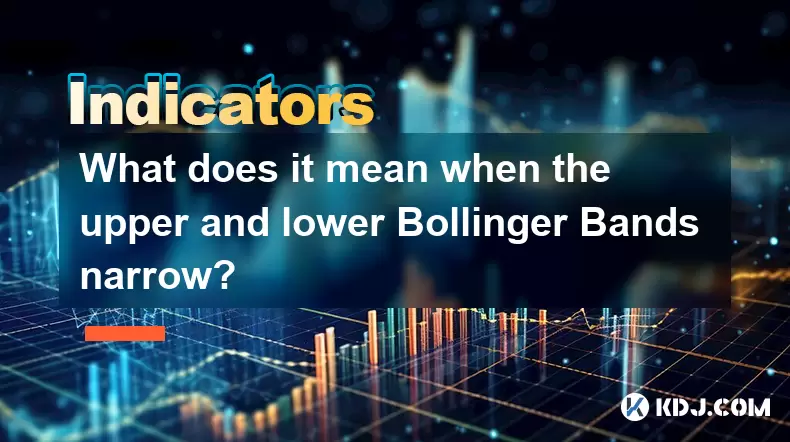
What does it mean when the upper and lower Bollinger Bands narrow?
Aug 09,2025 at 03:00pm
Understanding Bollinger Bands in Cryptocurrency TradingBollinger Bands are a widely used technical analysis tool in the cryptocurrency market, develop...
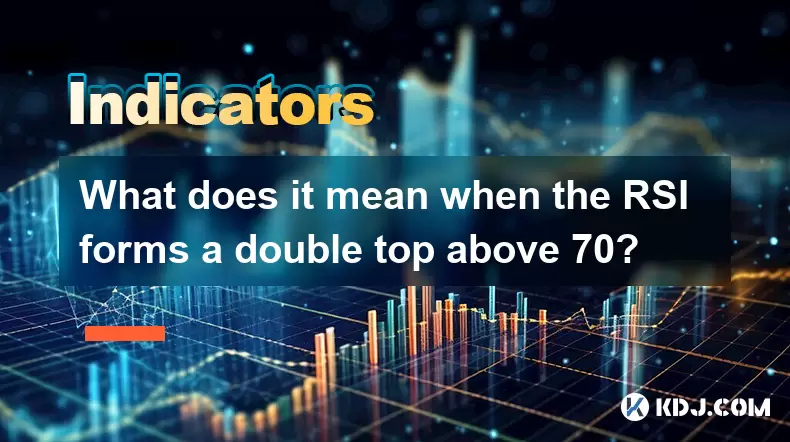
What does it mean when the RSI forms a double top above 70?
Aug 09,2025 at 05:50pm
Understanding the RSI and Overbought ConditionsThe Relative Strength Index (RSI) is a momentum oscillator that measures the speed and change of price ...
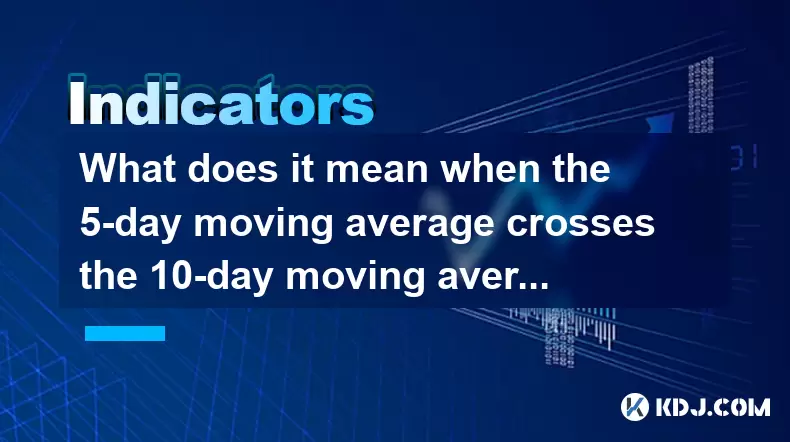
What does it mean when the 5-day moving average crosses the 10-day moving average but the 20-day moving average remains upward?
Aug 09,2025 at 03:35pm
Understanding Moving Averages in Cryptocurrency TradingMoving averages are foundational tools in technical analysis, especially within the cryptocurre...
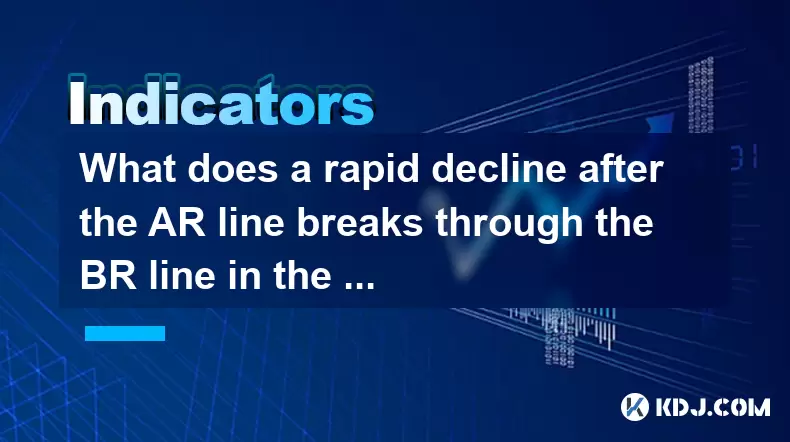
What does a rapid decline after the AR line breaks through the BR line in the ARBR indicator indicate?
Aug 09,2025 at 04:42pm
Understanding the ARBR Indicator ComponentsThe ARBR indicator is a technical analysis tool that combines two oscillators: the AR (Amplitude Ratio) and...

What does it mean when the Triple Moving Average (TRIX) turns downward but the price doesn't fall?
Aug 09,2025 at 12:42pm
Understanding the Triple Moving Average (TRIX) IndicatorThe Triple Moving Average, commonly known as TRIX, is a momentum oscillator designed to filter...

What does it mean when the Williams' oscillator repeatedly hits bottoms but fails to rebound?
Aug 09,2025 at 09:28am
Understanding the Williams %R OscillatorThe Williams %R oscillator, developed by Larry Williams, is a momentum indicator used in technical analysis to...

What does it mean when the upper and lower Bollinger Bands narrow?
Aug 09,2025 at 03:00pm
Understanding Bollinger Bands in Cryptocurrency TradingBollinger Bands are a widely used technical analysis tool in the cryptocurrency market, develop...

What does it mean when the RSI forms a double top above 70?
Aug 09,2025 at 05:50pm
Understanding the RSI and Overbought ConditionsThe Relative Strength Index (RSI) is a momentum oscillator that measures the speed and change of price ...

What does it mean when the 5-day moving average crosses the 10-day moving average but the 20-day moving average remains upward?
Aug 09,2025 at 03:35pm
Understanding Moving Averages in Cryptocurrency TradingMoving averages are foundational tools in technical analysis, especially within the cryptocurre...

What does a rapid decline after the AR line breaks through the BR line in the ARBR indicator indicate?
Aug 09,2025 at 04:42pm
Understanding the ARBR Indicator ComponentsThe ARBR indicator is a technical analysis tool that combines two oscillators: the AR (Amplitude Ratio) and...
See all articles

























































































